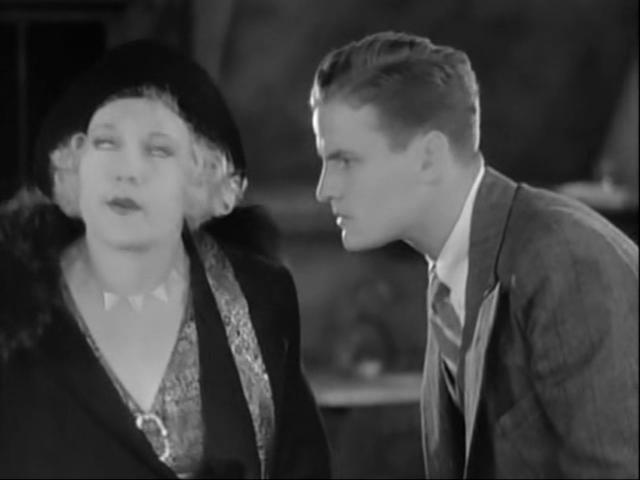So, didn’t make it in for STEAMBOAT BILL, JR but rocked up in time for Frank Lloyd’s OLIVER TWIST, with Neil Brand on piano — great stuff, actually a revelation on the big screen and with proper accompaniment. Our second remember of the Standing theatrical family appeared, Joan Standing, a Standing by marriage (Herbert Standing was in JUST AROUND THE CORNER way back on Friday was it?). John Standing, perhaps the last of the line, is still with us. I said this to friends and Mark immediately volunteered “I’m Still Standing” while Steph offered “Last Man Standing.”
My programme notes for this one are here.

Next up was OUR DANCING DAUGHTERS, a glossy MGM se-and-morality fable. You get not only Joan Crawford but also Anita Page and Nils Aster and Johnny Mack Brown and Dorothy Sebastian and Edward Nugent — all very sleek and elegant. Much as I enjoyed the funhouse visage of Ernest Torrence in MANTRAP, his facial contours a slalom for the eyeballs, there was much to be said for this panoply of male and female loveliness, surrounded by Cedric Gibbons’ moderne sets and aglow with studio moonlight. Maude Nelissen wrenched such heartache from the piano it had to get an emergency retuning in the interval.



Final film would have been THE ORGANIST OF ST VITUS (Martin Fric) but if I’d stayed for that one I wouldn’t have made it home, so the actual last film was THE RACKET, my man Lewis Milestone, and livelier than I’d remembered it, aided by more thugs with ugly mugs than you could shake Percy Marmont at — Louis Wolheim leading the mob with his impacted fender of a fizzog, and George “the Runt” E. Stone playing his equally lovely son. It’s a Howard Hughes production so some of the subsidiary goons may have been picked up from the real rackers, as was purportedly done on SCARFACE. Marie Prevost was ace, and director Milestone himself cameo’d as a speakeasy doorman (“Swordfish!”) ~


“Skeets” Gallagher played a drunken journo with a marked air of Frank McHugh avant la lettre. I googled the play to see whether McHugh had perchance originated the role and sleepy-eyed Gallagher mimicked his perf, but no. (But my research reminded me that John Cromwell starred in the play, and got to direct the remake.) Perhaps McHugh patterned his schtick on Gallagher, or perhaps the McHugh archetype was haunting the Jungian unconch for some time before manifesting — for Milestone! — in THE FRONT PAGE a few scant years later? (There are a few earlier McHugh appearances, but his role in TFP — as “McCue” — seems to set the seal on his persona.)

Mike Nolan (piano) and Frank Bockius (percussion) enhanced this one considerable. I had a ringside seat for the drum kit — RACKET is right! — no sleeping through that one. A riotous jazz-age end to the evening.
More tomorrow!






